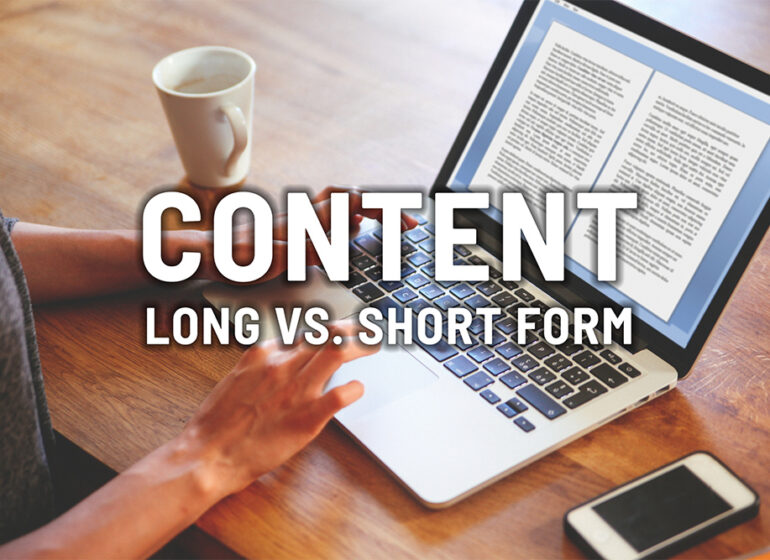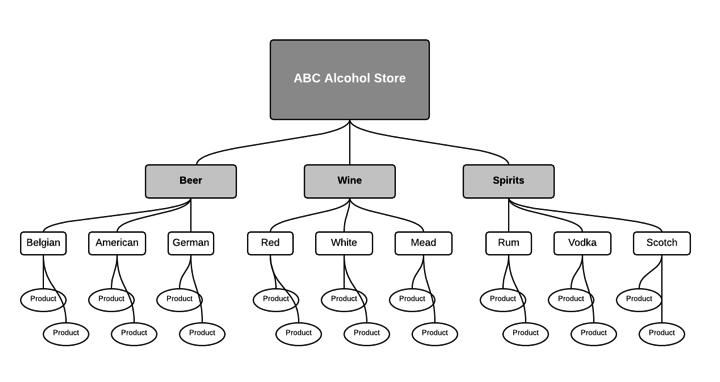While there is no question that content is the vehicle that connects your brand and its story to your target audience, the tactics, format, tools and strategies used in content…


While there is no question that content is the vehicle that connects your brand and its story to your target audience, the tactics, format, tools and strategies used in content…

If you have operated a website or blog for any period of time, you’ve undoubtedly heard the old adage that people have a limited tolerance for reading online. This long-standing belief has shaped online content production for decades. It has contributed to a landscape of bulleted-points, “snackable” bite-sized material and short-form content that is easily and quickly consumed by site visitors.
Alternatively, if you’ve kept your finger on the pulse of the content marketing industry over the past several years, you’ve probably seen studies and data which provide seemingly indisputable evidence that the longer your content, the better it’ll rank in Google.
So, does short-form content better than long-form? Which provides better engagement? While the answers aren’t cut and dry, the right answer is contingent entirely on your industry, the keywords you’re attempting to rank under and the user experience you’re providing. Before I outline the benefits of each content approach, let’s define short-form and long-form content.
What is the difference between short-form and long-form content?
Short-form content is typically content that is 600 words or less. The focus of short-form content is quick consumption of material in order to drive home concise messaging or to effectively transport visitors through various steps in a content flow. Short blog posts, infographics, social media content, brief portfolio and service descriptions are prime examples of short-form content.
Long-form content is generally well above 1,000 words with some industry experts defining it as 2,000 words or more. This content format is used in detailed blog posts, webinars, e-books, whitepapers and technical resource guides with the objective of providing more in-depth content for the audience.
While short-form content obviously has a key role in sections of your website’s information architecture, long-form content is critical for prominent search engine indexing. The following are a few things to think about when planning the length of your content.
Yes, long-form content tends to rank better than short-form content, but there’s a major caveat.
There is strong evidence that long-form content ranks better than short-form content. SerpIQ performed a study a few years ago that clearly illustrates a correlation between higher ranking sites and articles with a higher word count as demonstrated with the graph below:

Popular app makers, AppSumo and BuzzSumo, performed a joint study that examined the impact of more than a million articles. One resulting takeaway was that longer content pieces had a higher occurrence of social media shares.

On top of that, a recent HubSpot study established clear correlation between the word count of blog posts/articles and organic traffic.

With this data in mind, along with clear indications that content-length is now a prominent ranking signal for Google, should your sole content production goal be increased word count? The simple answer is, no.
While the studies above paint a seemingly clear cause and effect relationship between content length and organic placement/traffic, it completely disregards your audience’s experience, your industry and the nature of the topic at hand. That leads us to the critical consideration of user experience.
Let user experience be your guide to content length.
We now know that user experience and usability are significant ranking signals in the Google algorithm. It makes sense that physical site usability attributes like page load speed and mobile-friendliness are important to search engine indexing. It may be less apparent that user experience, as it relates to content quality, is just as critical. This begs the question, how exactly is this measured by Google?
Google has fine-tuned the ability to determine quality and relevancy of a site’s content by measuring a variety of engagement metrics. This includes the measurement of behavioral patterns such as clicking back to the search results page after visiting a search listing. This indicates to Google that the listing did not satisfy the needs of the search. Alternatively, a search listing click that doesn’t result in a click back to the search results page would indicate that the listing was higher quality and relevant to the original search parameters. Across a dataset of millions of queries, Google has the ability to determine quality of search results based on these behavioral metrics.
This teaches us that user response to your content is critical and that content quality should be as much of a consideration as content length. If you have a topic that could be authoritatively answered in 400 words or less, the ideal content length for your piece is 400 words or less. Attempting to stretch that content piece to 1,000 words for the sake of producing long-form content would adversely affect the quality of your article or blog post. This would ultimately impact the user response to your content, the likelihood of backlink acquisition and social media shares.
Alternatively, if you have a topic that requires 3,000 words to effectively cover in an authoritative and relevant manner, your objective should be to produce a piece that provides your audience with the best possible material over the span of those 3,000 words.
Therein lies the key. Aim to write the best possible material for your topic. As Rand Fishkin from MOZ states, “I’m going to pursue content in areas where I believe I can create something 10 times better than the best result out there.” This doesn’t necessarily mean more content. It means the most relevant and authoritative content possible.
Understanding the difference between the role of higher-level content versus detailed and authoritative content.
A common content structure mistake I encounter regularly is an attempt to use long-form content at all levels of a website’s architecture. A three-page sales letter servicing as a front page of a company website or a services overview page that roadblocks more in-depth services sections with a 1,500 word general introduction are ill-suited applications of long-form content.
While we’ve established the benefits of long-form copy in establishing authoritative content about a topic, applying excessively wordy copy in the role of high-level structure – introductory pages and overviews – produces a site content structure that isn’t user friendly.
Visitors to high-level entry-points of your website are typically in the early phases of their navigation process. In these areas, short-form content fits the bill and allows your users to scan your site material, get a sense of your service or product offerings and permits them to quickly navigate to their area of interest. The effectiveness of short-form content in these areas is the ability to quickly route your user to their destination without having them wade through unnecessary information. Once your user has arrived at a logical content end-point, the power of long-form content comes into full play.
Conclusion: Think about your users.
There are countless studies that demonstrate the effectiveness of long-form over short-form content and vice versa. Many of these studies are performed in a vacuum that doesn’t take into consideration confounding factors such as your industry, location within your information architecture or the topic at hand. Viewed as tools, both content approaches serve distinct applications and roles in your website content. A healthy content approach consistently takes into consideration high-level content objectives (the quick routing of your user to their desired interest area through the use of short-form content) versus the objectives of pages, posts and deeper areas of your site (the goal of establishing authority and providing in-depth information.)
—
Need help with your content strategy, content production or marketing? Contact Crescent Leaf Technologies today for a free consultation.

Time is running out to migrate your website from HTTP to HTTPS Over the past few years, Google has single-handedly ushered in the era of a secure web through a…

As a 22-year old digital marketing and SEO firm, Crescent Leaf has been around the proverbial Internet marketing block. The past two decades have not only shown a huge boost…

In the Internet marketing world, the pitting of information architecture (IA) versus search engine optimization (SEO) goals elicits Cold War-like rhetoric on both sides of the argument. Those in camp…

Chances are your WordPress website or blog has Yoast, a popular SEO plug-in, installed if you’ve engaged in any sort of SEO activity. A recently discovered flaw has been identified…
